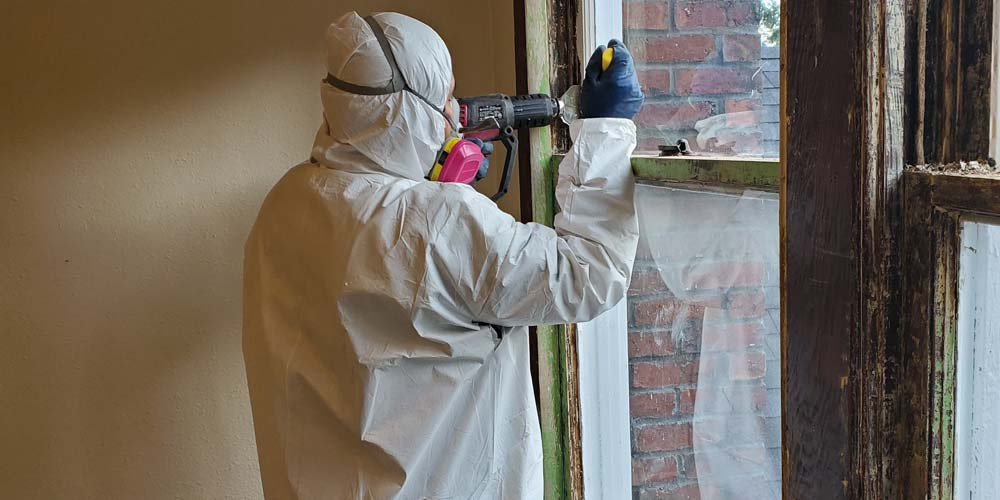Best Practices for Guaranteeing Safe and Comprehensive Lead Violation Abatement
Dealing with lead violation abatement needs a multi-faceted approach to make sure both safety and security and compliance. It's the last clearance procedure, entailing detailed inspections and research laboratory screening, that genuinely verifies a lead-free atmosphere, making sure long-lasting safety and security. Exactly how do these methods adjoin to assure thorough lead reduction?

First Analysis
Performing an initial analysis is a crucial initial step in lead violation abatement. This stage incorporates a thorough examination of the property to identify the visibility, extent, and details areas of lead-based hazards. Qualified specialists, such as qualified lead examiners or take the chance of assessors, should execute a thorough site examination, utilizing devices like X-ray fluorescence (XRF) analyzers to precisely identify and gauge lead concentrations in paint, dirt, soil, and water.
The evaluation should also consist of a review of the building's history, previous records, and any type of grievances or wellness problems reported by passengers - Lead Removal Contractors. Documenting the findings meticulously is crucial, as these records develop the basis for creating an efficient reduction approach. A comprehensive assessment likewise entails tasting and research laboratory evaluation, which are vital to confirm the visibility of lead and overview succeeding activities
In addition, it is important to interact the results transparently to all stakeholders, consisting of homeowner, tenants, and governing authorities. By ensuring that the initial assessment is conducted with precision and roughness, professionals can lay a strong structure for a targeted and effective lead abatement process, eventually protecting public health and ensuring compliance with regulatory requirements.
Proper Control
Correct containment is vital to avoid the spread of lead impurities throughout reduction tasks. Efficiently taking care of containment reduces the danger of lead dirt and particles migrating to non-work areas, thereby guarding both the atmosphere and people outside the immediate job area. To attain correct control, an airtight barrier of plastic sheeting have to be developed around the workspace, guaranteeing all joints and sides are firmly sealed. Lead Removal Contractors. This barrier ought to expand from floor to ceiling and be taped down to prevent any kind of leaks.

Regular inspections of the control area are needed to look for breaches or weaknesses in the barrier. Any type of identified issues need to be promptly addressed to maintain the honesty of the containment. By adhering to these methods, reduction projects can efficiently control lead contamination and reduce associated health and wellness threats.
Worker Security
Guaranteeing worker defense is sites extremely important during lead abatement projects to stop work exposure to hazardous lead bits. Important measures consist of using individual protective tools (PPE) such as respirators, gloves, and full-body fits specifically developed to obstruct lead dirt and fumes. Workers must go through detailed training on the correct usage and upkeep of PPE, including fit testing for respirators to guarantee optimum effectiveness.
Engineering controls, such as local exhaust ventilation systems, are important in reducing airborne lead focus in the workplace. Management controls must also be applied, including limiting the duration of direct exposure and revolving employees to decrease private direct exposure times. Routine medical security and biological tracking are crucial for early discovery of lead absorption, allowing timely intervention and treatment.
In addition, establishing a decontamination procedure is crucial. Employees need to follow rigid decontamination pop over to this site treatments prior to breaks and at the end of their shift to stop lead dirt from being brought outside the workplace. This consists of detailed hand and face cleaning with lead-specific cleaner and transforming out of polluted garments.
Careful Clean-up
Preserving a secure work environment prolongs beyond worker security and encompasses precise cleanup to guarantee lead particles are extensively eliminated from the site. The process of thorough cleanup is essential in preventing the recontamination of the eased off area and securing both current and future residents.
To attain a thorough cleanup, all workplace have to be methodically decontaminated. This involves using specialized HEPA (High-Efficiency Particulate Air) hoover and wet-wiping strategies to capture and eliminate great lead dirt that may have chosen surfaces. It is necessary to clean all horizontal surface areas, consisting of floors, home window sills, and countertops, in addition to upright surfaces that might have caught lead fragments.
Employees must use appropriate individual protective devices (PPE) throughout cleanup to prevent direct exposure to residual lead dust. Utilized cleaning materials such as wipes, sponges, and mop heads ought to be disposed of according to contaminated materials disposal guidelines.

Last Clearance
Last clearance is the important concluding phase of lead reduction that determines whether the website is secure for reoccupation. This essential step entails comprehensive examination and testing to verify that all lead threats have been effectively gotten rid of.

Last clearance screening not only shields future occupants however also makes sure conformity with local, state, and government guidelines. In addition, it works as a documented validation of the reduction specialist's adherence to industry ideal techniques. Guaranteeing a thorough and successful last clearance is important in safeguarding public wellness and fostering rely on the reduction process.
Conclusion
Making certain secure and thorough lead infraction reduction demands a multifaceted technique encompassing preliminary evaluations with innovative discovery approaches, effective control approaches, rigorous employee protection procedures, and precise cleaning procedures. The final clearance stage, including thorough evaluations and lab screening, is essential to confirm conformity with EPA standards. Adherence to these best methods ensures a secure atmosphere for occupants, reduces health dangers, and maintains governing demands, consequently promoting public health and wellness and safety and security in lead-affected locations.